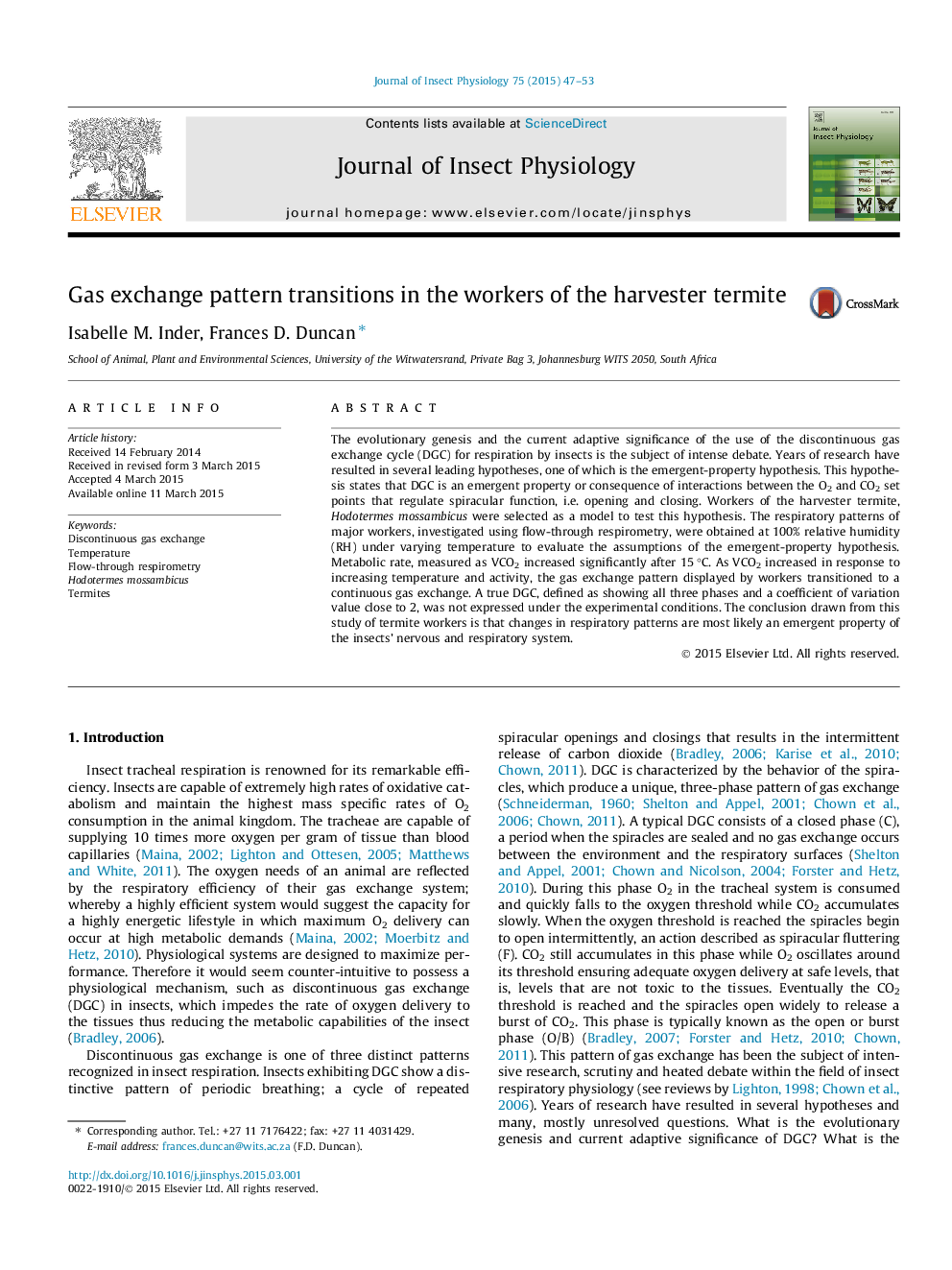| Article ID | Journal | Published Year | Pages | File Type |
|---|---|---|---|---|
| 2840412 | Journal of Insect Physiology | 2015 | 7 Pages |
•Workers exposed to low temperatures had significantly lower metabolic rates.•At low temperatures CO2 was emitted below the estimated spiracle closure threshold.•The coefficient of variation of VCO2 decreased with increasing temperature.•A continuous form of gas exchange was used in response to increasing temperature.
The evolutionary genesis and the current adaptive significance of the use of the discontinuous gas exchange cycle (DGC) for respiration by insects is the subject of intense debate. Years of research have resulted in several leading hypotheses, one of which is the emergent-property hypothesis. This hypothesis states that DGC is an emergent property or consequence of interactions between the O2 and CO2 set points that regulate spiracular function, i.e. opening and closing. Workers of the harvester termite, Hodotermes mossambicus were selected as a model to test this hypothesis. The respiratory patterns of major workers, investigated using flow-through respirometry, were obtained at 100% relative humidity (RH) under varying temperature to evaluate the assumptions of the emergent-property hypothesis. Metabolic rate, measured as VCO2 increased significantly after 15 °C. As VCO2 increased in response to increasing temperature and activity, the gas exchange pattern displayed by workers transitioned to a continuous gas exchange. A true DGC, defined as showing all three phases and a coefficient of variation value close to 2, was not expressed under the experimental conditions. The conclusion drawn from this study of termite workers is that changes in respiratory patterns are most likely an emergent property of the insects’ nervous and respiratory system.
Graphical abstractFigure optionsDownload full-size imageDownload as PowerPoint slide
